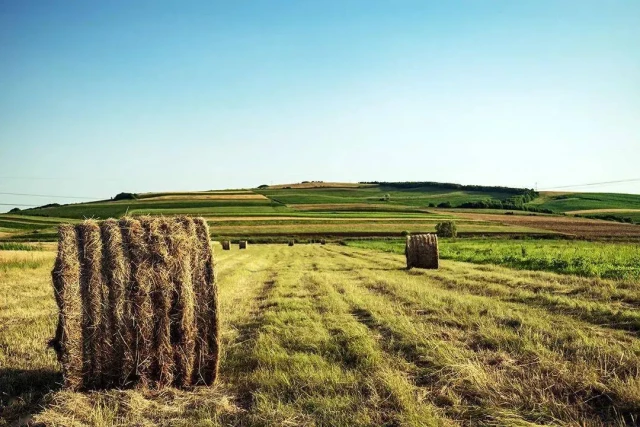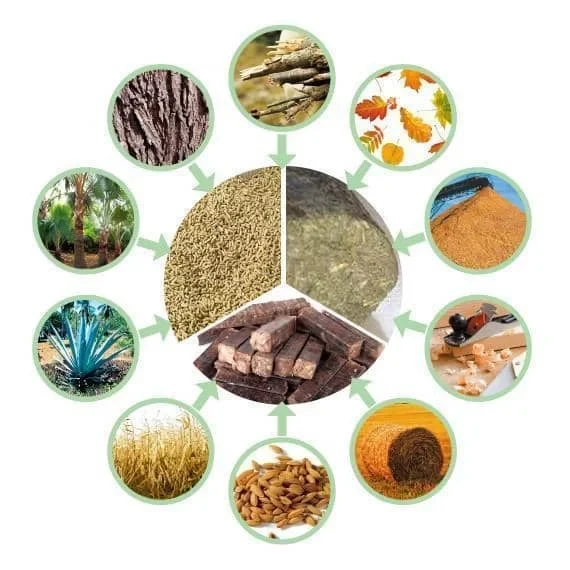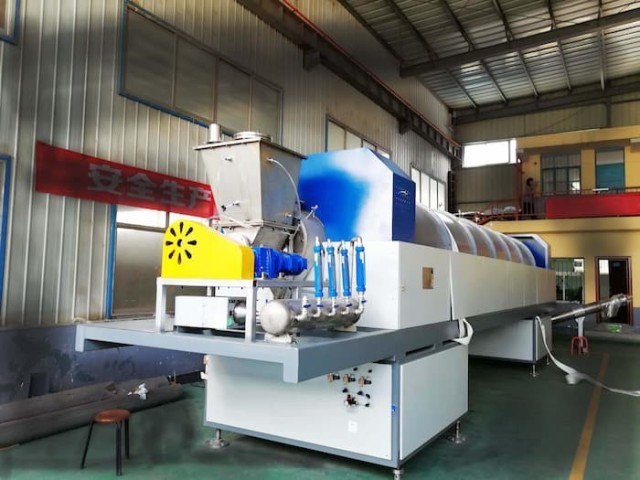Introduction
Pyrolysis is a thermal decomposition process that converts biomass feedstocks into bio-oil, syngas, and biochar. The process involves heating the feedstocks in the absence of oxygen, which results in the breakdown of the organic matter into smaller molecules. Biomass feedstocks for pyrolysis can be obtained from a variety of sources, including agricultural waste, forestry residues, energy crops, and municipal solid waste. In recent years, pyrolysis has gained increasing attention as a sustainable technology for the production of renewable energy and value-added products. However, different feedstocks have their own unique advantages and disadvantages, which must be carefully considered when selecting the most suitable feedstock for a particular application.
Table of Contents
Types of Biomass Feedstocks for Pyrolysis
Pyrolysis is a promising method for producing renewable energy from biomass. Different types of biomass feedstocks can be used in pyrolysis, each with advantages and disadvantages. The choice of biomass feedstock for pyrolysis depends on factors such as availability, energy content, and environmental impact. In this section, we will discuss the different types of biomass feedstocks suitable for pyrolysis.

Woody Biomass
Woody biomass, such as wood chips and sawdust, is a common feedstock due to its high energy content and availability. However, it requires a longer pyrolysis time and can result in higher emissions of tar and char.
Agricultural Residues
Agricultural residues, such as corn stover and rice straw, are also used but may contain higher levels of ash and can require additional preprocessing.
Energy Crops
Energy crops, such as switchgrass and miscanthus, are a promising option as they have a high yield and low ash content, but may require more land resources.
Municipal Solid Waste
Municipal solid waste, including food waste and paper, can also be pyrolyzed, but it may contain contaminants and produce lower quality bio-oil.
Algae
Algae can be converted into biofuels and biochar through pyrolysis.
Biomass from Invasive Species
Biomass from invasive species such as phragmites, kudzu, and melaleuca can be converted into biofuels and biochar through pyrolysis.
Biomass feedstocks can vary in terms of quality and composition, which can affect the pyrolysis process and the quality of the final products. It’s important to note that the suitability of a biomass feedstock for pyrolysis depends on its composition, availability, and cost. Therefore, further research is needed to determine the most efficient and sustainable feedstocks for pyrolysis.
Advantages of Biomass Feedstocks for Pyrolysis
Pyrolysis is a process that converts biomass feedstocks into biofuels, biochar, and other valuable products. The choice of biomass feedstocks plays a critical role in the efficiency and effectiveness of the pyrolysis process.

Agricultural Residues
Agricultural residues are readily available and inexpensive. This feedstock includes corn stover, wheat straw, and rice husks. They are widely available in many parts of the world and can be used to produce biofuels, biochar, and other chemicals. Agricultural residues are low-cost feedstocks that can be used to produce biofuels on a large scale.
Forestry Residues
Forestry residues are abundant and can be sourced sustainably. This feedstock includes forest thinning, sawdust, and wood chips. Forestry residues are a significant source of biomass feedstock and can be used to produce biofuels, biochar, and other chemicals. They are also a sustainable source of feedstock and can be sourced without damaging the environment.
Energy Crops
Energy crops such as switchgrass and miscanthus have high yields, low input requirements, and can be grown on marginal land. They are highly productive crops that can be grown on a large scale and can be used to produce biofuels, biochar, and other chemicals. Energy crops are also sustainable and can be grown without damaging the environment.
Municipal Solid Waste
Municipal solid waste (MSW) can be a suitable feedstock for pyrolysis. MSW includes organic waste such as food scraps and yard waste, and non-organic waste such as plastics and paper. The use of MSW as a feedstock for pyrolysis has many advantages. It reduces the amount of waste going to landfills, reduces greenhouse gas emissions and produces valuable products such as biofuels and biochar.
In conclusion, the advantages of using different biomass feedstocks for pyrolysis include availability, cost, sustainability, and suitability for the process. Agricultural residues are readily available and inexpensive, forestry residues are abundant and can be sourced sustainably, energy crops are highly productive and can be grown on marginal land, and municipal solid waste can reduce the amount of waste going to landfills.
Disadvantages of Biomass Feedstocks for Pyrolysis
Pyrolysis is a promising technology for producing renewable energy from biomass feedstocks. However, the use of certain types of biomass feedstocks for pyrolysis has several disadvantages that need to be considered.
Challenges with Woody Biomass Feedstocks
One challenge associated with using woody biomass as a feedstock is its high lignin content. Lignin is a complex polymer that is difficult to break down and can cause equipment to wear out more quickly during the pyrolysis process. As a result, woody biomass can be difficult to process and can add to the overall cost of the process.
Low Energy Density of Agricultural Residues
Another disadvantage of using certain biomass feedstocks for pyrolysis is their low energy density. Agricultural residues such as corn stover and wheat straw tend to have low energy densities, which means that more fuel is required to produce the same amount of energy as higher energy density feedstocks. This can make the process less cost-effective, especially for small-scale or domestic use.
Environmental Issues with Certain Feedstocks
Certain biomass feedstocks, such as switchgrass and miscanthus, require large amounts of water and fertilizer to grow, which can be environmentally unsustainable. Additionally, the use of palm oil as a feedstock has been criticized for its contribution to deforestation and increased carbon emissions. The potential for emissions of greenhouse gases during the production process is another disadvantage of using certain biomass feedstocks.
Challenges with Pyrolysis Process
The weaknesses of biomass pyrolysis include high energy consumption, high capital cost, and the need for efficient separation and purification of the end products. The process requires high temperatures and long residence time, which results in high energy consumption. The equipment and machinery required for the process are also costly and require significant investment. Additionally, the process produces a mixed product stream that requires further separation and purification before it can be used. This can be a challenging and time-consuming process, and it can also add to the cost of the overall process.
Conclusion
In conclusion, biomass feedstocks have proven to be a valuable resource for pyrolysis due to their abundance, renewability, and carbon-neutral properties. However, each type of feedstock has its advantages and disadvantages, which must be considered before making a decision on which to use. For instance, herbaceous feedstocks such as switchgrass and corn stover are easier to handle and have a lower ash content, while woody feedstocks like sawdust and wood chips have higher energy content but produce more ash. It is essential to carefully evaluate the feedstock's characteristics to ensure the pyrolysis process's success while minimizing environmental impacts.
Related Products
- Electric Rotary Kiln Small Rotary Furnace Biomass Pyrolysis Plant
- Electric Rotary Kiln Continuous Working Small Rotary Furnace Heating Pyrolysis Plant
- Electric Rotary Kiln Pyrolysis Furnace Plant Machine Calciner Small Rotary Kiln Rotating Furnace
- Electric Rotary Kiln Small Rotary Furnace for Activated Carbon Regeneration
- Graphite Vacuum Furnace Bottom Discharge Graphitization Furnace for Carbon Materials
Related Articles
- Biomass Pyrolysis An Effective Means of Producing Biofuels
- How Biomass Pyrolysis Machines Work A Comprehensive Overview
- Electric Rotary Kiln Pyrolysis Furnace: A Comprehensive Guide to Pyrolysis Technology
- Electric Rotary Kiln Pyrolysis Furnace: Design, Operation, and Applications
- Rotary Furnaces: Advanced Materials Processing and Applications







